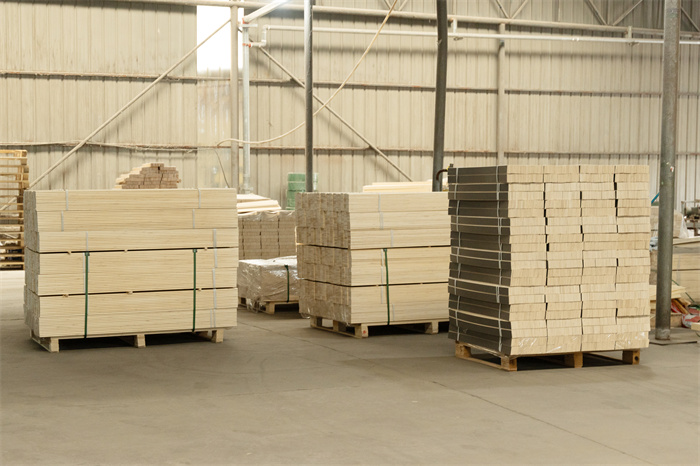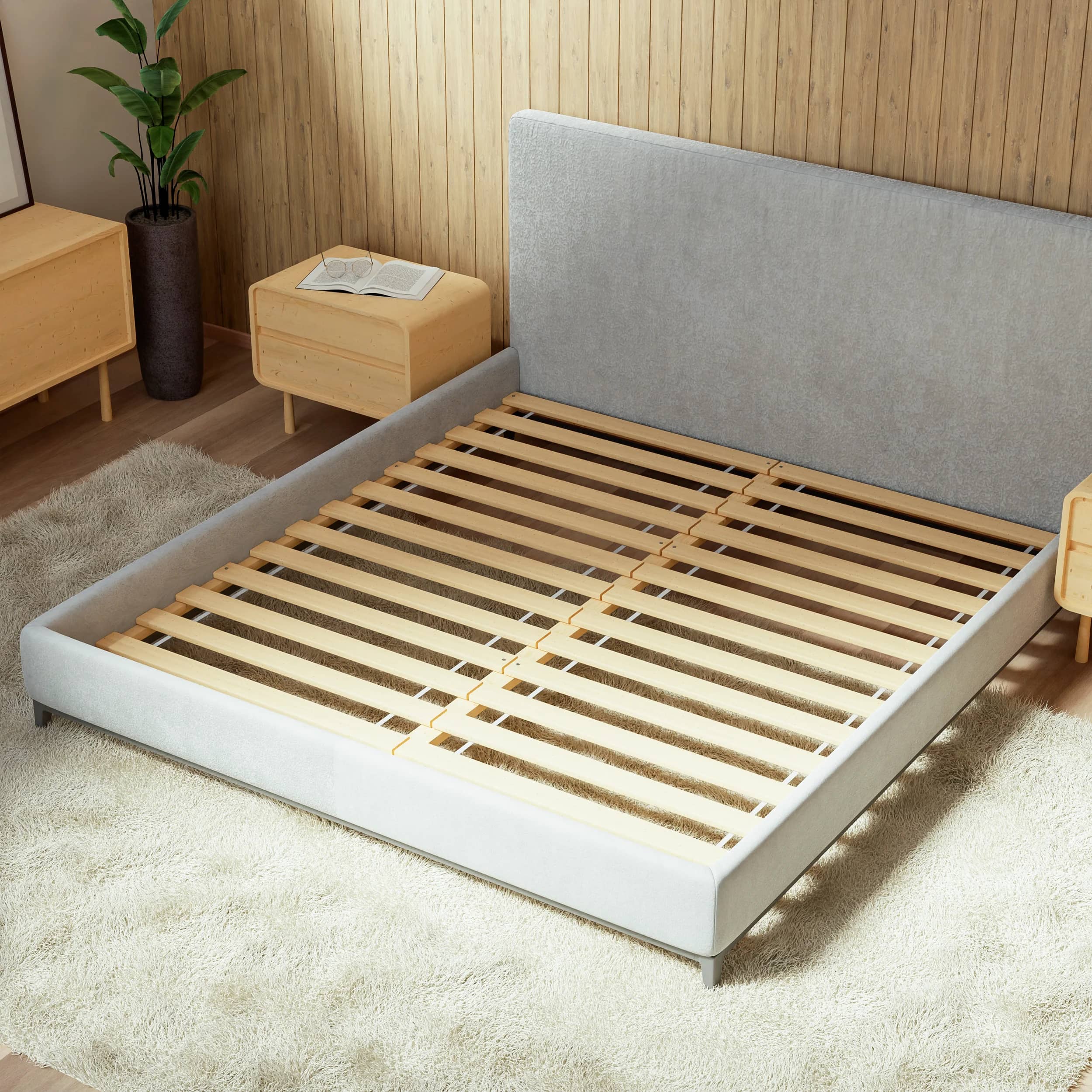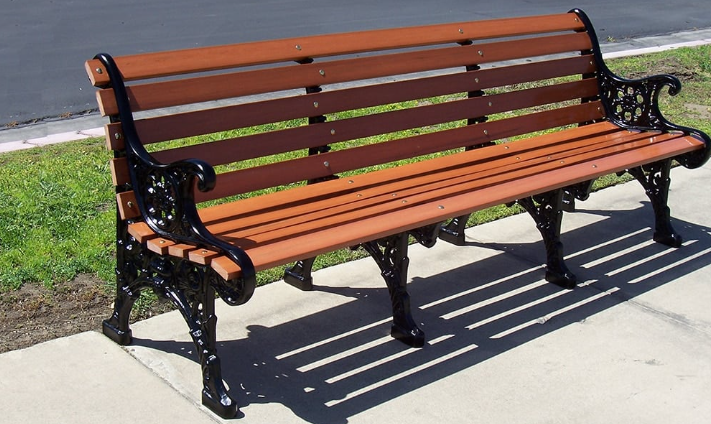Slats, often unseen heroes in countless applications, provide the crucial foundation for everything from a good night’s sleep to the structural integrity of our homes. Their importance lies in their ability to offer support, stability, and longevity, but navigating the world of slats can be daunting with the array of types available. This comprehensive guide delves into the unique characteristics of three popular slat types: plywood slats, LVL slats, and bed slats. By understanding their manufacturing processes, advantages, limitations, and ideal use cases, you can confidently choose the right slat type for your specific needs.

Plywood Slats: Versatility and Strength in a Sheet
Plywood, a testament to engineered wood’s potential, has revolutionized construction and furniture making. Its strength-to-weight ratio and remarkable versatility make it a go-to material for a wide range of projects. Plywood slats, in particular, are favored for their ability to provide reliable support and stability without adding excessive weight. But what exactly goes into creating these versatile building blocks?
The Making of a Plywood Slat: A Symphony of Layers
The magic of plywood lies in its layered construction. Thin sheets of wood veneer, known as plies, are carefully stacked with their grain directions alternating at 90-degree angles—a technique called cross-graining. This strategic layering, bonded together under heat and pressure with strong adhesives, is the key to plywood’s impressive strength and dimensional stability. The cross-graining technique effectively distributes stress across the entire panel, making it incredibly resistant to bending, warping, and cracking, even under heavy loads.
Plywood Slat Types: Exploring the Options
While all plywood slats share a common layered construction, they come in various types, each tailored for specific applications and environments:
- Sanded Plywood: This type features a smooth, sanded surface, making it suitable for projects where appearance matters, such as furniture making, shelving, and decorative applications. It’s available in different grades, with higher grades offering a smoother, more blemish-free surface.
- Sheathing Plywood: Designed for structural applications like wall sheathing, roof decking, and subflooring, sheathing plywood prioritizes strength and stiffness. It’s typically rougher than sanded plywood and is often marked with exposure ratings, indicating its suitability for various weather conditions.
- Moisture-Resistant Plywood: This type is treated with water-resistant adhesives and resins to withstand humidity and occasional moisture exposure. It’s commonly used in kitchens, bathrooms, and exterior applications like soffits and siding.
- Marine Plywood: The gold standard for moisture resistance, marine plywood is constructed using waterproof adhesives and top-grade veneers free from defects. It’s ideal for boat building, docks, and other applications demanding exceptional water resistance.
- Fire-Resistant Plywood: Treated with fire-retardant chemicals, this type of plywood slows down the spread of flames and smoke, enhancing fire safety. It’s often used in commercial buildings, apartments, and other areas with strict fire codes.
Choosing the right plywood slat type depends on your project’s specific requirements, considering factors like load-bearing capacity, moisture exposure, fire regulations, and aesthetic preferences.
Advantages of Plywood Slats:
- Exceptional Strength and Stability: Plywood’s layered structure, enhanced by the cross-graining technique, makes it exceptionally strong and resistant to warping, bending, and cracking. This makes it ideal for applications where structural integrity is paramount, such as subflooring, wall sheathing, and heavy-duty shelving.
- Lightweight yet Durable: Despite its impressive strength, plywood remains surprisingly lightweight, making it easy to handle, transport, and install. This unique combination of strength and lightness makes it a practical choice for projects where weight is a concern, such as attic flooring or mobile home construction.
- Wide Range of Thicknesses and Sizes: Plywood slats are available in a vast array of thicknesses and sizes, catering to a diverse range of project requirements. This versatility allows for customization and ensures you can find the perfect fit for your specific needs, whether it’s light-duty shelving or heavy-duty construction applications.
- Cost-Effective Solution: Plywood generally boasts a more budget-friendly price tag compared to solid wood, making it an attractive option for large-scale projects or for those conscious of their budget. This affordability, coupled with its impressive performance, makes plywood a popular choice for both residential and commercial construction.
- Smooth, Consistent Surface: The layered construction of plywood results in a smooth, consistent surface that readily accepts various finishes. It can be easily painted, stained, or laminated, providing endless design possibilities and making it suitable for applications where aesthetics are important, such as furniture making, cabinetry, and decorative wall paneling.
Limitations of Plywood Slats:
- Susceptibility to Moisture Damage: While plywood is designed with moisture resistance in mind, prolonged exposure to water or high humidity can compromise its structural integrity. The layers can delaminate, and the adhesive bond can weaken, leading to warping and swelling. Proper sealing and protection are essential, particularly in exterior applications or high-moisture environments like bathrooms and kitchens.
- Visible Edges Require Finishing: The layered edges of plywood slats are often exposed, requiring edge banding or other finishing techniques to achieve a polished and aesthetically pleasing look. This adds an extra step and cost to the manufacturing process, which might be a significant consideration for projects with visible edges.
- Not as Dimensionally Stable as LVL: While plywood offers commendable stability, it can still be susceptible to slight dimensional changes in extreme humidity fluctuations. This makes it less dimensionally stable compared to LVL, especially for applications demanding absolute precision, such as door and window frames, where even slight warping can hinder functionality.
LVL Slats: Engineered for Ultimate Strength and Stability
Laminated Veneer Lumber (LVL), a shining example of engineered wood’s capabilities, takes strength and stability to a whole new level. Its manufacturing process results in a product that surpasses even solid lumber in certain aspects, making it a top choice for demanding structural applications. LVL slats are renowned for their exceptional strength, impressive spanning capacity, and superior dimensional stability, making them indispensable in modern construction.
The Making of LVL Slats: Strength in Numbers
LVL slats are created by taking thin sheets of wood veneer, similar to plywood, but with a crucial difference—all the plies are oriented in the same direction, maximizing the wood’s inherent strength along that axis. These veneers are then bonded together under immense pressure and heat using incredibly strong, moisture-resistant adhesives. This process creates a large, solid, and incredibly strong beam that exhibits exceptional structural integrity.
Advantages of LVL Slats:
- Unmatched Strength and Spanning Capacity: LVL slats are renowned for their exceptional strength, often exceeding that of traditional lumber, especially when it comes to bending resistance. This remarkable strength allows them to span greater distances without requiring intermediate supports, making them ideal for large open spaces and heavy-duty applications like supporting roofs and floors.
- Superior Dimensional Stability: Engineered to withstand the test of time and varying environmental conditions, LVL slats are highly resistant to shrinking, swelling, and warping caused by fluctuations in humidity. This remarkable dimensional stability makes them the preferred choice for applications where precision and consistency are paramount, such as door and window frames, where even the slightest warping can affect functionality.
- Consistent Quality and Performance: The manufacturing process of LVL offers a high level of control over quality and consistency, something that’s difficult to achieve with natural lumber. Each slat is engineered to meet specific performance standards, ensuring reliability and predictability in structural applications, which is crucial for meeting building codes and safety regulations.
- Availability in Long Lengths: LVL slats can be manufactured in significantly longer lengths compared to traditional lumber, reducing the need for joints and creating stronger, more stable structures. This is particularly advantageous for large-span applications or projects requiring uninterrupted spans, such as open-concept designs or expansive commercial buildings.
- Environmentally Friendly Option: LVL production utilizes smaller, faster-growing trees, making it a more sustainable and environmentally responsible option compared to traditional lumber, which often relies on larger, old-growth trees. This efficient use of resources aligns with eco-conscious building practices and helps reduce the overall environmental impact of construction.
Limitations of LVL Slats:
- Higher Cost than Plywood: The superior strength, stability, and predictability of LVL come at a price. LVL slats are generally more expensive than plywood slats, making them a premium option. However, the cost difference is often justified by their exceptional performance, longevity, and reduced waste, especially in demanding structural applications where failure is not an option.
- Limited Aesthetic Options: LVL slats are primarily engineered for their structural properties, and their appearance reflects this utilitarian purpose. They may not offer the same aesthetic appeal as natural wood, making them less suitable for applications where aesthetics are a primary concern, such as exposed beams or furniture design.
- Requires Specialized Cutting Tools: The density and hardness of LVL require specialized cutting tools and techniques, making it more challenging to work with compared to plywood or traditional lumber. This often necessitates specialized equipment or the expertise of professional installers for certain projects.
more LVL Slats types:LVL Slats: The Secret to Building Better
| Engineered Veneer LVL Slats | Foil Paper LVL Slats | Special Shape LVL Slats | LVL Slats for Bed Frames | LVL Slats for Packing |
Bed Slats: The Foundation of a Good Night’s Sleep
While plywood and LVL slats often take center stage in construction, bed slats play a more intimate role in our lives, quietly ensuring a comfortable and supportive night’s sleep. These often-overlooked components provide the crucial link between your mattress and bed frame, impacting not only the lifespan of your mattress but also the quality of your sleep. Understanding the different types of bed slats and their unique characteristics can help you make informed decisions when choosing a new bed frame or upgrading an existing one.
Types of Bed Slats: A Diverse Landscape
Bed slats come in a variety of materials, each offering a unique blend of flexibility, support, and price points. Choosing the right material often depends on personal preference, desired firmness level, and budget:
- Wooden Bed Slats: Wood, a timeless classic, remains a popular choice for bed slats, offering a balance of strength, flexibility, and natural appeal. Wooden slats are favored for their ability to provide both support and a degree of give, conforming to the body’s contours for added comfort.
- Beech: Known for its strength, durability, and slight flex, beech provides excellent support and promotes mattress breathability. It is a popular choice for higher-end bed frames and is well-suited for individuals seeking a balance of firmness and flexibility.
- Pine: A more affordable option, pine offers decent support and a natural look but may not be as durable as hardwoods like beech. It is a good choice for budget-conscious consumers or those seeking a lighter-weight option.
- Birch: A balance of strength and flexibility, birch offers a good compromise between support and affordability. It is a versatile option suitable for a wide range of sleepers and mattress types.
- Metal Bed Slats: Metal bed slats, typically made of steel, offer a sturdy and durable foundation for the mattress. They are known for their strength and ability to withstand heavy weight loads, making them suitable for individuals with heavier body types or those seeking a very firm sleep surface. However, they can be less flexible than wooden slats and may not offer the same level of comfort or breathability.
- Plastic Bed Slats: While less common, plastic bed slats offer a lightweight and affordable option. However, they may not provide the same level of support or durability as wood or metal slats and are generally considered a less desirable option for long-term use. They may be suitable for temporary or light-duty applications, such as guest beds or children’s beds.
more wooden bed slats types:
Factors to Consider When Choosing Bed Slats:
- Slat Spacing: The spacing between slats plays a crucial role in determining the level of support and firmness. Narrower spacing (2-3 inches) provides firmer support and is often recommended for heavier individuals, those who prefer a firmer sleep surface, or those with mattresses that require more support, such as memory foam mattresses. Wider spacing (4-5 inches) offers more flexibility and breathability and is suitable for lighter individuals, those who prefer a softer feel, or those with mattresses that benefit from increased airflow, such as latex mattresses.
- Slat Width: The width of the slats also affects the level of support and durability. Wider slats offer greater surface area for weight distribution, enhancing support and preventing mattress sagging. Wider slats are generally preferred for heavier individuals or those seeking maximum support and longevity from their mattress.
- Mattress Type: Different mattress types, such as memory foam, innerspring, and latex, have varying support and breathability requirements. Memory foam mattresses often benefit from narrower slat spacing for optimal support, while latex mattresses may perform better with wider spacing to allow for increased airflow.
- Personal Preference: Ultimately, the best bed slats are the ones that feel best to you. Consider your sleep preferences, body type, and mattress type when making a decision. It’s also a good idea to try out different slat types if possible to find the perfect balance of comfort and support for your individual needs.
Frequently Asked Questions about Slat Types
1. Can I use plywood slats for structural applications like floor joists?
While plywood is strong and versatile for various applications like sheathing and subflooring, it’s not recommended for critical structural components like floor joists. These require the exceptional strength, spanning capacity, and dimensional stability that engineered lumber like LVL provides. Using plywood in these situations could lead to sagging, instability, and potential structural failure.
2. What type of bed slat is best for a memory foam mattress?
Memory foam mattresses, known for their body-conforming properties, require close slat spacing (ideally 2-3 inches) to prevent sagging and ensure proper weight distribution. Opt for sturdy hardwood slats like beech or birch, as they offer a balance of strength, flexibility, and durability. Avoid wider spacing as it can lead to uneven support and premature mattress wear.
3. How do I protect plywood slats from moisture damage?
Plywood’s Achilles’ heel is its susceptibility to moisture damage, especially when exposed to prolonged dampness. To safeguard your plywood slats, apply a high-quality sealant to all surfaces, paying close attention to edges and cut ends where moisture can easily penetrate. In high-moisture areas like bathrooms or exterior applications, consider adding a moisture-resistant barrier between the plywood and potential water sources.
4. Are LVL slats more environmentally friendly than traditional lumber?
Yes, LVL generally boasts a better environmental profile compared to traditional lumber. Its manufacturing process utilizes smaller, faster-growing trees, maximizing resource efficiency and minimizing reliance on old-growth forests. This responsible sourcing, combined with LVL’s durability and longevity, makes it a more sustainable choice for eco-conscious builders.
5. Can I paint or stain LVL slats?
While technically possible, painting or staining LVL slats is generally not recommended. LVL is primarily engineered for its structural properties, and its surface is not designed for aesthetic finishes. The treatment chemicals used during LVL production can also hinder paint adhesion, leading to uneven finishes and potential peeling. If you require a specific aesthetic, consult with a building professional for suitable alternatives or covering options.
Conclusion: The Right Slat for the Right Job
Navigating the world of slats doesn’t have to be overwhelming. By understanding the unique characteristics, advantages, and limitations of different slat types, you can confidently choose the best option for your specific needs. Whether you’re embarking on a major construction project, crafting a piece of furniture, or simply seeking a more supportive foundation for a good night’s sleep, choosing the right slat can make all the difference in terms of performance, durability, and overall satisfaction.



